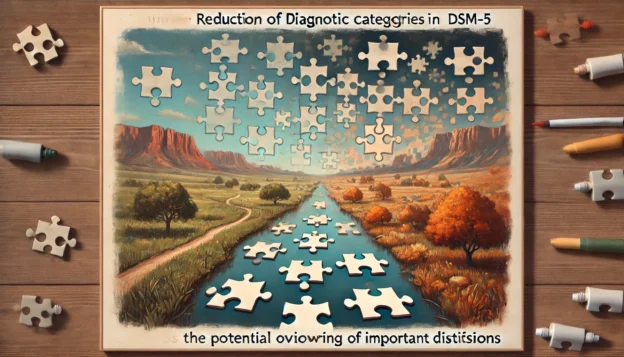The DSM-5’s consolidation of Asperger’s Syndrome with other autism spectrum disorders into a single category of Autism Spectrum Disorder (ASD) has been highly controversial. Critics argue this change overlooks important distinctions and specific needs of individuals with Asperger’s Syndrome. Dr. Lorna Wing, a prominent British psychiatrist, and several contemporary researchers, including Dr. Catherine Lord, James McPartland, and Fred Volkmar, have raised concerns. They emphasize that the unique cognitive, social, and behavioural profiles of those with Asperger’s warrant separate classifications to ensure appropriate support and interventions. Organizations like Autism Speaks also highlight potential difficulties in service access under the broader ASD category. This debate underscores the necessity for ongoing refinement and discussion in the field of developmental disorders.
Introduction
The publication of the DSM-5 in 2013 marked a significant shift in the diagnosis of autism spectrum disorders. One of the most controversial changes was the decision to consolidate Asperger’s Syndrome, Pervasive Developmental Disorder-Not Otherwise Specified (PDD-NOS), and other subtypes into a single category: Autism Spectrum Disorder (ASD). Critics argue that this reduction in diagnostic categories overlooks important distinctions, potentially affecting the understanding, treatment, and support of individuals with unique profiles.
Leading Critics of the DSM-5’s Reduction of Diagnostic Categories
Several contemporary researchers and clinicians have raised significant concerns about the DSM-5’s decision to consolidate Asperger’s Syndrome with other autism spectrum disorders into a single diagnosis of Autism Spectrum Disorder (ASD).
Dr. Lorna Wing
A British psychiatrist who was a prominent critic of the DSM-5’s decision to combine Asperger’s Syndrome with other autism spectrum disorders into a single category. Dr. Wing argued that this change overlooks important distinctions between the conditions, particularly the specific needs and challenges faced by individuals with Asperger’s Syndrome. Her extensive work on autism and advocacy for recognizing the unique profiles within the spectrum has been influential in the field of developmental disorders.
Dr. Catherine Lord
Dr. Lord, a prominent figure in autism research and a key contributor to the DSM-5, has been involved in discussions and research about the implications of these diagnostic changes. However, her stance often aligns with the need for diagnostic refinement rather than separation, yet she acknowledges the nuanced needs of individuals who were previously diagnosed with Asperger’s Syndrome.
James McPartland
McPartland’s research has highlighted the potential exclusion of individuals under the new DSM-5 criteria who would have been diagnosed with Asperger’s Syndrome or PDD-NOS under the DSM-IV. His studies indicate that the DSM-5 criteria may fail to capture the full range of autism spectrum manifestations, particularly those without significant repetitive behaviors, thus underscoring the need for a more inclusive diagnostic approach (ASAT) (Psychology Today).
Fred Volkmar
Dr. Volkmar, another influential voice in the field, has critiqued the DSM-5 for its broad approach to ASD. He argues that the distinct characteristics of Asperger’s Syndrome, such as the absence of language delay and specific social interaction challenges, merit separate consideration to ensure individuals receive appropriate and tailored support (SpringerLink).
Autism Speaks
This organization has also voiced concerns about the implications of the DSM-5 changes for service eligibility and support. They emphasize that individuals who previously had a clear diagnosis of Asperger’s Syndrome might face difficulties in accessing services under the broader ASD category (Autism Speaks).
Arguments for Separate Classification
These critics collectively argue that the unique cognitive, social, and behavioural profiles of individuals with Asperger’s Syndrome justify maintaining it as a separate diagnostic category. This distinction is crucial for ensuring that individuals receive the most appropriate interventions and support tailored to their specific needs, rather than being subsumed under a broader, less specific diagnosis that might overlook critical differences.
Conclusion
The reduction of diagnostic categories in the DSM-5 has sparked significant debate within the mental health community. Critics argue that combining Asperger’s Syndrome and other autism spectrum disorders into a single category may overlook important distinctions, potentially impacting the diagnosis, treatment, and support of individuals with unique needs. Recognizing these differences is essential for providing the most effective and personalized care, highlighting the ongoing need for refinement and discussion in the field of developmental disorders.
References
- ASAT – Changes to the DSM Autism Diagnostic Criteria
- Will the DSM-5 Reduce Rates of Autism? | Psychology Today
- Expert Q&A: DSM-5 and ASD | Autism Speaks
